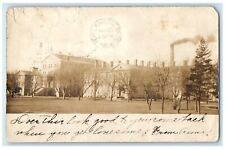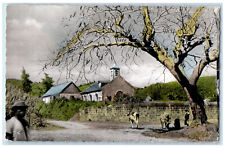When you click on links to various merchants on this site and make a purchase, this can result in this site earning a commission. Affiliate programs and affiliations include, but are not limited to, the eBay Partner Network.
St. Peter\'s Cove is Lilliput Lane\'s interpretationof a southern English village, based on Godshill and Ventnor from the Isle ofWight, along with other buildings from the Hampshire Meon Valley, and the areaof the New Forest around Christchurch. St. Peter\'s Cove was produced in aworldwide limited edition of 3,000; of which this is No. 0270. It is in excellentcondition and has been displayed for a short time and stored in the originalbox in a smoke free home by the original purchaser. The original box in intactbut does show wear. Also includes the booklet describing the village and the Certificate Of Authenticity (COA). Seller pays insurance and Signature Delivery Confirmation.
Villages are at the heart of Britain\'s heritage.From the prehistoric period until the beginning of the nineteenth century, mostof the population of Britain lived in villages. Here they worked close to theirhomes, often on the land. Villages were close knit and essentiallyself-sufficient communities which produced most of their own food and had theirown local skilled craftsmen. Before improvements in transport in the lateeighteenth and early nineteenth centuries this self-reliance was particularlyimportant because travelling or carrying goods and supplies over any distancewas difficult.
It was not until the Industrial Revolution that thepattern of settlement in Britain altered from being mainly rural and became apredominantly urban society. Today many colorful and attractive villages stillremain to bear witness to our rural past, but only a tiny proportion of thepopulation now work on the land and most villagers are employed away from theirhomes.
St. Peters Cove could be a picturesque rural villagesituated on the coast in the environs of Hampshire or the Isle of Wight. Itsdevelopment has been influenced both by its proximity to the sea and by theEnglish countryside.
The village could date back at least to Saxon timesand possibly even earlier. Saxons from Europe lead by the chieftain Cerdiclanded in this region in 495 AD and colonized the area. They may haveestablished St Peter\'s Cove as a new village although it is possible that theysimply took over an already existing settlement and gave it a new name. Nothingremains of the Saxon buildings, which would have been made from wood, turf orclay.
The village was built on a steep hill for safety andthe original buildings were at the top of the hill. The church is both thefocal point of and the oldest building in St Peter\'s Cove with the rest of thecottages clustered around it. It became the dominant feature of the village inearly Christian times and may have been built on an earlier sacred site such asa Bronze Age ring barrow or Roman temple. Most villages in Britain are centeredaround a church in this way.
In the medieval period all of the village buildingswith the exception of the church were made of wood from the oak forests whichcovered much of the area at this time. From the late sixteenth and throughoutthe seventeenth and early eighteenth centuries there was a gradual rebuildingof the old medieval dwellings in villages and towns throughout Britain. Nosettlement remained untouched and as a result most of the buildings in StPeter\'s Cove date from no earlier than this time.
The vernacular architecture of St Peter\'s Cove isheavily influenced by geology. Until the nineteenth century when improvementsin transport made moving heavy goods like stone possible, people had to usematerials which were available locally. St Peter\'s Cove is a charming mixtureof building materials and styles. Several buildings are timber framed. Theyhave horizontal and vertical timber beams joined together to form a wall withopen panels in between. The panels are filled in, either with plaster paintedwhite or brick, leaving the timbers blackened and exposed. Purbeck limestonehas been used extensively in the village to build the church, several cottagesand the sea wall. Brick also comprises many of the buildings. The bricks werehand made from shallow easily obtainable local deposits of clay. Like manyvillages, St Peter\'s Cove may have maintained its own brickworks.
As well as filling the gaps between timber framesbrick acts as a base for some buildings and has been used to build chimneys andto brace together the flints which make up the Chandlers shop. Because StPeter\'s Cove is on the coast and had to bear the brunt of fierce sea gales severalof the houses have layers of horizontal wooden boards known as\"weatherboard\" fixed across their sides. Thatch and plain clay tilesare the two roofing materials found in the village. The older houses wouldoriginally have been covered in marsh reed thatch from the tidal coastalestuaries. Much of this land, however, has now been drained and cultivated, andwheat straw thatch is used as a substitute. The plain clay dies are a similarcolor to the bricks as they are made from the same earth.









